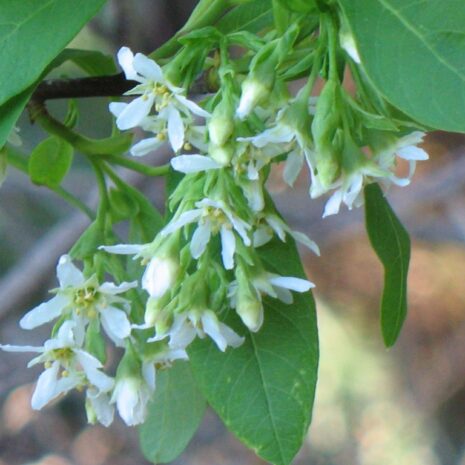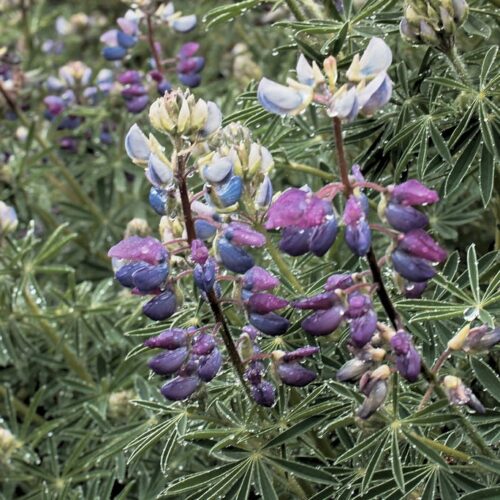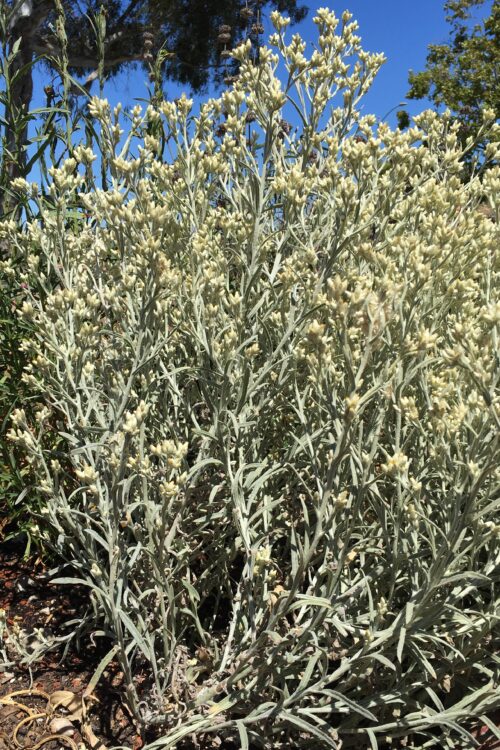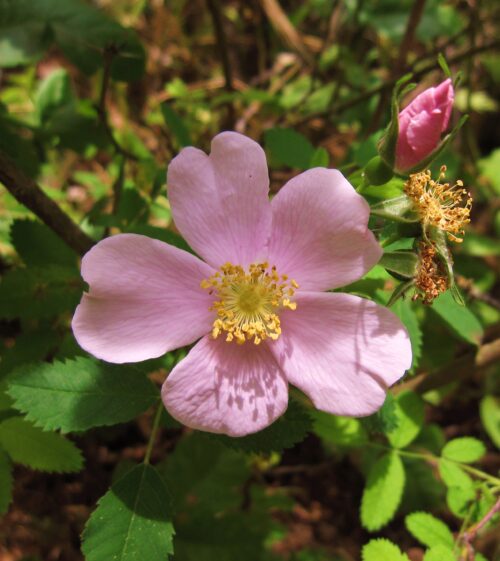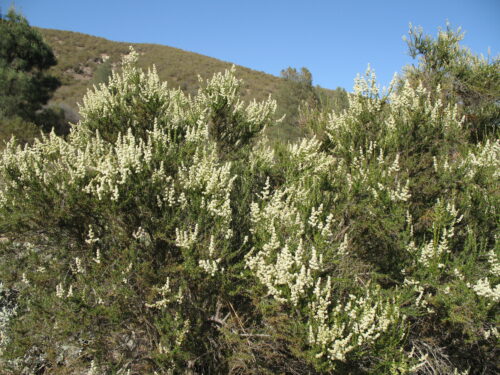Oemleria cerasiformis
We do not take online orders for plants. Please come in to the nursery, call or email: (510) 234-2222 or sales@thewatershednursery.com
Share this page
Osoberry
An erect, loosely branched deciduous shrub of variable height depending on conditions. Some remain in the 6-10 ft. range as wide suckering bushes spreading into thickets 12′ wide or more. Some grow 15′-20′ as small trees.
Withstands pruning; can be cut back virtually to the ground & will grow back fresh & new.
Osoberry is among the first plants to leaf out and flower early in the spring. Its bark is smooth, reddish brown to dark gray. Ideally, give the plant a little protection from afternoon sun. It can tolerate wet or dry soils, but moist, humus, acidic soils are best.
Use for informal mass plantings and screens.
Sun: Full Sun, Part Shade
Water: Dry, Light, Moderate
Soil: Clay, Loam
Other: Attracts Butterflies, Attracts Bees, Attracts Birds, Deer Resistant, Drought Tolerant
| Ecological Value | Fruits are utilized widely by birds and wildlife. Early nectar source for bees and butterflies. |
|---|---|
| Container | D-40O, D-40 |
| Historical Uses | The fruit was eaten raw and dried by many Native American groups. They also made tea of the bark, and chewed the twigs as a mild anesthetic and aphrodisiac. |
| Distribution | Native to California and also found outside of California, but is confined to western North America. |
| Elevation | Between 0 and 5600 feet |
| Communities | |
| Habitat | Canyons |

